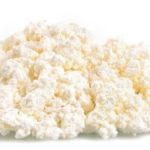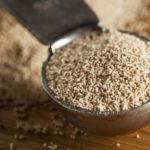Interesting facts about cheese
 Cheese is a very common product. Many of us can see his popular varieties on the table every day, but elite cheese costs a lot of money. And not everyone is able to appreciate this product – some smell of some expensive cheese seems simply unpleasant. Well, how many people – so many tastes, right?
Cheese is a very common product. Many of us can see his popular varieties on the table every day, but elite cheese costs a lot of money. And not everyone is able to appreciate this product – some smell of some expensive cheese seems simply unpleasant. Well, how many people – so many tastes, right?
The human body is easier to absorb protein from cheese than from milk.
The cheeses contain vitamins of groups A, D, E, B, PP and C, they excite appetite and have a beneficial effect on digestion.
The cheese is optimally balanced with calcium and phosphorus, as well as other nutrients that rich in milk.
In Norway, a special brunust cheese is prepared – it has a brown color and a sweetish taste. To prepare this cheese, the serum from goat’s or cow’s milk is boiled together with cream for several hours. Sugar from milk turns into caramel, which gives the cheese a sweet taste.
Before the beginning of the 20th century, the enzyme required for the preparation of cheese was obtained from the stomachs of calves, which were no more than 10 days old. Fortunately, then scientists managed to get this enzyme with the help of genetic engineering – it is now used by most of the cheese makers.
The most popular and famous cheese in the world is Italian Parmesan.
Carpathian cheese from a sheep’s milk can be stored in the freezer for an indefinite period of time, while the cheese does not lose its properties at all.
For the preparation of blue cheeses, edible mold of the penicillium is used – from the same mold type Alexander Fleming received the world’s first antibiotic penicillin.
Sometimes cheese makers attach cheese mites or even insect larvae to the head of the cheese, which affect the maturation of the product.
The largest exporter of cheese in the world by the amount of earned money is France. Some countries, for example, Ireland and New Zealand, export 90-95% of the cheese produced in the state.
The largest importer of cheese in the world is Germany, followed by Britain and Italy.
Cheese – the oldest food product, invented before the appearance of writing. It is assumed that people began to cook cheese about 8000 years before the era when sheep were tamed.
Scientists believe that the method of cooking cheese was discovered by chance – people stored milk in the stomachs of slaughtered animals, and it turned into cottage cheese, whey and cheese under the influence of enzymes.
Until the time of Peter the Great, cheeses in Russia were prepared without heat treatment, hence the name of the product – cheese, that is, raw.
The largest cheese head that ever produced in Russia was produced by the Altai region cheese cheeses – it weighed 721 kilograms.
Fromology is the collecting of labels from cheese. There is also a more specialized version of this hobby, tirosemiophilia, in which the collection is collected only from round cheese labels.
It is believed that mice and other rodents like cheese very much, but this is not so – small animals prefer products with less pronounced smell, for example, grain and fruits (see interesting facts about mice).
One French cheese maker spent 17 years writing a book about 839 grades of cheese.
The smell of cheese is considered an aphrodisiac.
Some varieties of cheese to give them a beautiful color tinted with a decoction of marigold flowers or carrot juice.
The British Queen Victoria was presented with a circle of cheddar cheese for half a ton at the wedding.
Holes in cheese professionals call “eyes”.



























